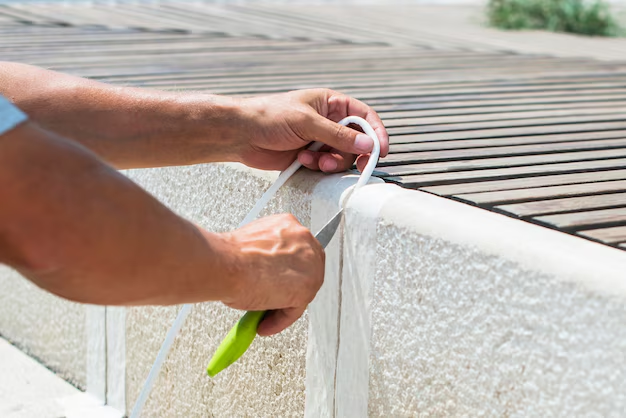Discover How to Easily Fix a Leaky Roof
Few home issues are as stress-inducing as the sudden discovery of a roof leak. Not only can it damage your interiors and belongings, but it also poses a serious risk to the structural integrity of your home. Fortunately, you can often tackle these leaks without extensive professional help. Here’s a thorough guide on identifying and fixing roof leaks effectively, while also exploring financial and educational resources that can ease the burden of significant home repairs.
Identifying the Source of the Leak
The first step in addressing a roof leak is finding its source. Roof leaks aren’t always a result of damaged shingles; they can also stem from clogged gutters, damaged flashing, or worn-out roof vents. Here’s how to trace the origin:
- Inspect the Attic: Look for water stains, mold, or damp spots. Use a flashlight to track the water’s path back to the source.
- Check Roof Exterior: When it’s safe, examine the roof for missing shingles, cracks, or deteriorated areas.
- Gutter and Downspouts: Ensure these are clean and secure, as blockage can lead to leaks.
Simple DIY Solutions
Once you have located the leak, you can use these DIY solutions:
Replace or Patch Missing Shingles:
- Remove the damaged shingle carefully without breaking the surrounding ones.
- Apply roofing cement under the new shingle and press it firmly into place.
Repair Small Holes or Cracks:
- For minor holes, use roof sealant or caulk. For larger repairs, roofing tape can serve as a temporary waterproofing solution.
Gutter Maintenance:
- Ensure gutters and downspouts are clear to allow proper water drainage.
When to Call a Professional
While DIY can solve minor issues, complex or extensive damage often requires a professional touch. You should call in experts if:
- The leak persists despite temporary fixes.
- Mold growth or significant water damage is evident.
- You notice structural concerns or feel unsafe attempting the fix.
Leveraging Financial Resources
Repairing a roof can be expensive, but several financial assistance programs can ease this burden, particularly if the damage is severe. Here are some resources worth exploring:
- Home Repair Loans and Grants: Check government programs such as the U.S. Department of Agriculture (USDA) Single Family Housing Repair Loans & Grants for eligible homeowners.
- Insurance Claims: If a storm or an event covered by home insurance caused the leak, filing an insurance claim can cover repairs.
- Local Government Aid: Some states or localities offer grants or low-interest loans for necessary home repairs to low-income residents.
Exploring Educational Resources for Homeowners
If managing home repairs is overwhelming, consider these educational opportunities:
- Workshops and Courses: Many communities and online platforms offer workshops on home maintenance and small repairs.
- DIY Videos and Tutorials: Websites such as YouTube have a plethora of instructional content that can guide you through specific roof repairs step-by-step.
Additional Financial Options
If you're considering larger financial decisions to prevent or address major repairs:
- Home Equity Loans: Use equity from your home for larger projects if necessary.
- Credit Card Solutions: Take advantage of promotional financing offers for bigger purchases.
- Budgeting Software: Optimize your finances with budgeting tools to allocate funds efficiently.
Handy list of Financial Assistance & Educational Tools 🏡💡
- 🏠 USDA Home Repair Loans & Grants
- ⚖️ Insurance Claim Evaluation
- 🏢 Local Government Aid Programs
- 🎓 Community Home Repair Workshops
- 📺 Online DIY Repair Tutorials
- 💳 Credit Card Finance Offers
- 📊 Budgeting and Financial Planning Tools
In conclusion, while roof leaks can be intimidating, proper identification, immediate DIY solutions, and strategic use of resources can manage the situation effectively. By considering financial assistance and educational opportunities, you can not only fix the leak but also better handle future unforeseen home expenses.
